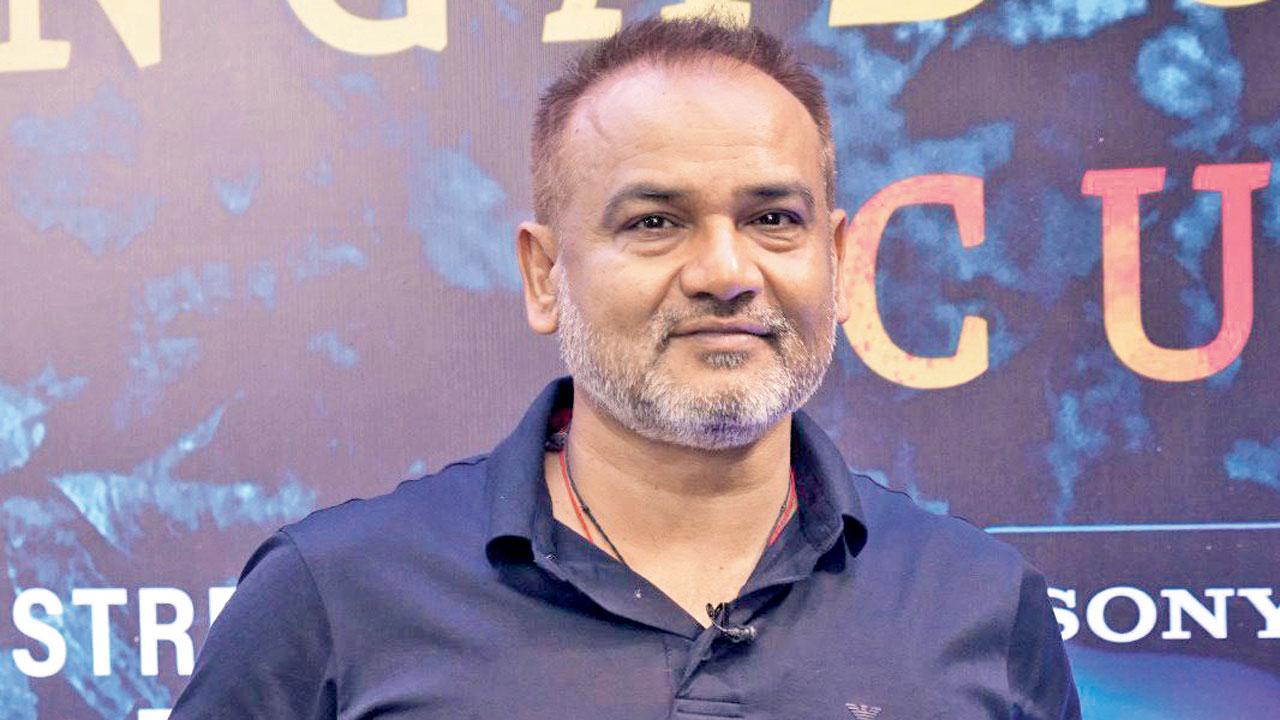With environmental thriller The Jengaburu Curse, director Panda on highlighting the ill-effects of mining and displacement

Faria Abdullah and Nasser in The Jengaburu Curse
Our greed is getting the better of us. The rapidly depleting natural resources and global warming are probably the biggest proof of it. With The Jengaburu Curse, director Nila Madhab Panda attempts to tell a story that depicts the effects of mining and deforestation. The National Award-winning filmmaker, who has previously helmed acclaimed films like Kadwi Hawa, I am Kalam, and Halkaa, has roped in the tribal community of Odisha to lend authenticity to the SonyLIV thriller. In conversation with mid-day, the creator talks about the challenges of making the series and why it is a burning subject today.
ADVERTISEMENT
Edited excerpts from the interview.
What does Jengaburu mean?
Jengaburu means red mountain. Our show is based on several realities across the world, and we wrote the story after a lot of research. I put it together [with the idea of talking about] nuclear power, whistleblowing, tribal communities, displacement, and the [effects of] mining.

What did the research entail?
It took two to three years to complete the script because it was a difficult [show to mount]. [We have witnessed] how climate change has been impacting all of us. The destruction can be seen everywhere. So, it was easy to draft the script, but to mount it, with nature, the hills, and rivers adding subtext to all of it, was tough. The series was shot in Bhubaneswar, Konark, and Keonjhar in Odisha, which is rare to see in cinema. We also shot in London and Myanmar. India has over 62 kinds of tribal communities. I wanted to bring their stories to the fore.
Have you met the tribal community in Odisha?
I worked with them in the show, so that they didn’t feel unjustified when we were shooting there. I have used their villages, and represented their language and culture. I did it so that when people see their lives, they understand that this is a life mankind lived before they [decided to tag themselves as] civilians, and them as tribals. Tribal people are the origin [of civilisation]; we all come from that root, and I feel proud telling their stories.
How did you explain your vision behind the series to them?
They are simple people. Ultimately, the story, their culture and beliefs are the heroes. When you see the first episode, you realise that we are talking about their legend. It’s not a fantasy tale that you hear in the Mahabharata. This is real. The legend comes from the rivers and mountains. When people realise that there is something valuable underneath, they [disturb nature’s equilibrium] for their greed. What they don’t realise is that the repercussion is the curse. That is my story.
What are some of the things you had to be careful about when writing the story?
There was nothing to be afraid of. What is wrong with saying that if you demolish a hill, there will be repercussions? It was right here for us to see when the Aarey forest was mercilessly destroyed. I am not questioning anybody specific or the system; I am not raising the question in any assembly or [targeting] any local leader or administration. I am questioning every one of us, including myself. Every morning you see disturbing news of temperatures rising, diseases spreading, COVID [variants] coming, and sea levels rising. All of this is happening because of our greed. Mining industries are uprooting forests, and displacing so many people.
How long did it take to film the series?
We took about 80 days to shoot. It was not easy to shoot the series as we had to go deep into the forest, and film the underground and over-the-ground mining scenes. We had about 120 crew members. The cast did not complain about having to live in a small town like Keonjhar, which doesn’t have luxury hotels. Everyone was cooperative and ready to push themselves. After we wrapped up the shoot, we cleaned up the premises and left no trace.
 Subscribe today by clicking the link and stay updated with the latest news!" Click here!
Subscribe today by clicking the link and stay updated with the latest news!" Click here!







